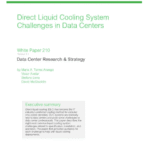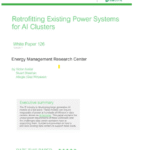Table of Contents
- Introduction to Identity Automation
- Current State of Identity Automation
- Predicted Trends for Identity Automation by 2025
- Benefits of Identity Automation for Businesses
- Challenges and Considerations for Implementation
- The Role of Artificial Intelligence in Identity Automation
- Case Studies: Organizations Leading the Way
- Future Skills for IT Professionals in Identity Automation
- Conclusion: Embracing Identity Automation by 2025
Introduction to Identity Automation
In the rapidly evolving landscape of technology, identity automation has emerged as a pivotal component for businesses striving to enhance operational efficiency and security. Identity automation refers to the systematic management of user identities through automated processes, enabling organizations to streamline access control and enhance security protocols. This technological advancement not only simplifies user management but also mitigates risks associated with human intervention errors, which can lead to vulnerabilities.
The significance of identity automation in modern business operations cannot be overstated. As organizations continue to migrate towards digital platforms and remote work environments, the need for robust identity management systems becomes more apparent. Automated identity solutions empower businesses to manage user identities at scale, ensuring that the right individuals have access to appropriate resources based on their roles. This level of control is essential in preventing unauthorized access and safeguarding sensitive information, particularly in an age where data breaches are increasingly common.
Moreover, identity automation facilitates compliance with regulatory standards, which are becoming more stringent across various industries. Businesses that adopt automated identity management systems can more easily adhere to required protocols, thereby avoiding costly fines and reputational damage. In addition, these systems support organizations in maintaining a comprehensive audit trail, which is vital for transparency and accountability.
As we look toward the future, particularly to the year 2025, the necessity for identity automation will only grow. With an expanding digital landscape and the increasing sophistication of cyber threats, organizations will need to invest in advanced identity solutions that can adapt to emerging challenges. Consequently, the integration of identity automation will be critical for businesses aiming to remain competitive and secure in a dynamic environment.
Current State of Identity Automation
As we examine the current landscape of identity automation, it is clear that businesses are increasingly integrating advanced identity management solutions into their operations. These solutions aim to improve security, enhance user experience, and streamline access management processes. Among the most prominent features of identity automation tools currently being utilized are Single Sign-On (SSO), Multi-Factor Authentication (MFA), and Identity Governance.
Single Sign-On (SSO) allows users to access multiple applications with one set of credentials, significantly improving productivity and reducing password fatigue. Organizations that have adopted SSO experience a reduction in helpdesk calls related to password resets, ultimately leading to cost savings and increased efficiency. In sectors such as education and finance, the implementation of SSO has become essential, allowing users to navigate secure environments seamlessly.
Multi-Factor Authentication (MFA) further bolsters security by requiring users to provide additional verification, such as biometric data or one-time codes sent to mobile devices. The growing threat landscape has led organizations to adopt MFA as a foundational aspect of their identity security strategy. For example, companies in the technology sector have reported a substantial decrease in unauthorized access attempts after implementing MFA solutions, illustrating their effectiveness in safeguarding sensitive data.
Identity Governance is another crucial component, enabling organizations to maintain control over user identities and their associated access rights. This feature aids in compliance with regulations such as GDPR and HIPAA, ensuring that organizations can manage permissions effectively. Notable case studies have shown that firms leveraging identity governance tools can better manage risk and maintain a clear audit trail of user access, thus improving overall accountability.
Despite these advancements, limitations remain, including challenges related to integration with legacy systems, user adoption, and ongoing maintenance costs. Organizations must navigate these hurdles to fully realize the benefits of identity automation in their operations.
Predicted Trends for Identity Automation by 2025
As we look ahead to 2025, several key trends are poised to significantly influence the landscape of identity automation, driven largely by technological advancements and evolving security needs. One of the most prominent trends is the continued integration of artificial intelligence (AI) and machine learning (ML) into identity management systems. These technologies are expected to enhance user experience and improve security protocols by enabling systems to learn from user behavior and predict potential security threats. Consequently, identity solutions will become increasingly intelligent and adaptive, adjusting in real-time to ensure robust authentication processes.
Another noteworthy trend is the adoption of zero-trust security models. Organizations are shifting away from traditional perimeter-based security approaches, favoring a more nuanced strategy that verifies every individual attempt to access systems, regardless of whether the request originates from inside or outside the network. This paradigm shift will necessitate sophisticated identity automation solutions that can quickly and accurately authenticate users while also granting the principle of least privilege, thereby minimizing potential risks related to unauthorized access.
Additionally, the integration of blockchain technology into identity management systems is anticipated to revolutionize how identities are verified and stored. By utilizing a decentralized ledger, organizations can ensure that identity data remains secure, tamper-proof, and easily accessible when needed. This innovation will foster greater trust in digital identities, as users will have more control over their personal data while benefiting from transparent verification processes.
In conclusion, the trends expected to shape identity automation by 2025 point towards a future where intelligent, secure, and user-centric solutions hold the reins. With advancements in AI and ML, the rise of zero-trust architectures, and the implementation of blockchain technology, businesses can anticipate a more resilient and adaptive framework for managing identities in an increasingly digital world.
Benefits of Identity Automation for Businesses
As organizations continue to evolve amidst technological advancements, the adoption of identity automation is becoming increasingly critical for business success. By 2025, the strategic implementation of identity automation will offer several key benefits, positioning businesses to thrive in an increasingly complex digital environment. One of the most significant advantages is enhanced security. Automated identity management solutions provide robust authentication processes and real-time threat monitoring, thereby minimizing the risk of identity breaches and data theft. Such security measures are essential in protecting sensitive information and maintaining customer trust.
Another benefit is the improved user experience that identity automation facilitates. By streamlining and simplifying the user authentication process, businesses can allow customers and employees to access the necessary resources without cumbersome delays. These systems often employ single sign-on (SSO) capabilities, reducing password fatigue and making navigation effortless. A seamless user experience can lead to higher satisfaction rates, ultimately fostering customer loyalty and employee engagement.
Furthermore, identity automation supports compliance facilitation. As regulatory requirements evolve, organizations must adapt to maintain compliance with data protection laws and standards. Automated identity governance can ensure that businesses continually enforce policies governing user access and data management, thus reducing the risk of non-compliance penalties. Additionally, implementing these systems can lead to significant cost savings in IT management. Automation reduces the manual workload, allowing IT teams to allocate their resources more efficiently and focus on strategic initiatives rather than routine administrative tasks.
Lastly, businesses that adopt identity automation will experience streamlined operations. By optimizing administrative processes, organizations can enhance overall productivity and agility, which contributes to business resilience. In the face of constant market shifts and potential disruptions, automated identity solutions empower companies to swiftly adapt, ensuring they remain competitive in a dynamic business landscape.

Challenges and Considerations for Implementation
The implementation of identity automation systems presents numerous challenges that organizations must navigate to ensure a successful transition. One significant hurdle is the integration of these systems with existing infrastructures. Many businesses operate with legacy systems that may not easily accommodate new automation technologies. This can lead to increased costs and extended timelines as organizations work to create compatibility between old and new systems. A thorough assessment of current IT assets and a clear strategy for integrating identity automation can help mitigate these risks.
User adoption is another critical factor that can influence the success of identity automation projects. Employees may resist new processes, particularly if they perceive these changes as cumbersome or threatening to their job roles. To foster a supportive environment, it is essential to provide comprehensive training and maintain an open line of communication throughout the transition period. Engaging employees early in the adoption process and soliciting their feedback can also facilitate smoother acceptance of these systems.
Moreover, regulatory compliance remains a pertinent concern during the implementation of identity automation. Organizations must ensure that their systems adhere to compliance requirements, such as GDPR or HIPAA, to avoid potential legal ramifications and financial penalties. This may necessitate collaboration with legal and compliance teams to develop robust policies that govern user data management and privacy.
Finally, the complexity of data management presents another layer of challenge. As organizations automate identity processes, they must manage vast amounts of sensitive data efficiently and securely. Employing advanced data management techniques and solutions can help streamline these processes, ensuring that data integrity and security are maintained. Through thorough planning and execution, organizations can address these challenges, paving the way for a successful identity automation implementation.
The Role of Artificial Intelligence in Identity Automation
Artificial Intelligence (AI) is increasingly recognized as a transformative factor in the realm of identity automation, driving innovations that enhance security and operational effectiveness. One of the most significant applications of AI is anomaly detection in user behavior, a process that identifies deviations from established patterns within user activities. By employing machine learning algorithms, organizations can continuously monitor user actions, discerning unusual behavior that could signify potential security threats. This proactive approach not only bolsters safety but also allows for swift interventions aimed at mitigating risks.
Moreover, automated identity verification stands as another pivotal application of AI in identity automation. Traditional identity verification methods often involve human input, which may lead to delays and inconsistencies. In contrast, AI-powered systems can analyze and authenticate identities in real-time by leveraging sophisticated algorithms and vast datasets. This automation reduces the chances of errors while enhancing the speed of the verification process, allowing businesses to streamline workflows efficiently and maintain a secure environment.
Another area where AI significantly contributes is predictive analytics for access management. Through analyzing historical data and recognizing patterns in user behavior, AI can forecast potential access challenges, enabling organizations to pre-emptively address issues before they manifest. This capability not only improves overall system performance but also supports informed decision-making, empowering businesses to allocate resources effectively and enhance user experiences.
Incorporating AI into identity automation provides businesses with a robust framework for enhancing security measures while simultaneously increasing operational efficiency. With ongoing advancements in AI technology, businesses can anticipate a future where identity automation becomes even more integral to their overall security posture and operational strategies.
Case Studies: Organizations Leading the Way
As organizations increasingly recognize the significance of identity automation, several entities have emerged as pioneers in implementing these transformative technologies. This section explores notable case studies that exemplify successful identity automation strategies, thereby demonstrating its profound impact on business processes.
One compelling example is a major financial institution that adopted identity automation to streamline customer onboarding and verification processes. By integrating advanced biometric authentication and AI-driven identity verification tools, the organization reduced the onboarding time from several days to a matter of minutes. The enhanced efficiency not only improved customer satisfaction but also significantly decreased operational costs. The institution reported a 30% decrease in fraud-related losses due to more robust identity management practices.
Another case is a leading healthcare provider that implemented identity automation to ensure compliance with stringent regulations like HIPAA. By deploying a centralized identity management system, the organization effectively streamlined access controls for sensitive patient data. The system utilized role-based access management and automated workflows for user provisioning and deprovisioning. As a result, the healthcare provider significantly mitigated the risks related to unauthorized access, while also enhancing the overall security posture. Additionally, the automation resulted in a 50% reduction in time spent on administrative identity management tasks.
In the retail sector, a major e-commerce platform realized the importance of identity automation during peak shopping seasons. The retailer utilized automated identity verification processes to manage user accounts securely, enabling quick access while preventing account takeovers and fraud. Employing machine learning algorithms, the platform could immediately identify suspicious activities and take action, thus safeguarding customer information. The result was a notable increase in customer trust and retention, alongside a 25% boost in sales during critical shopping periods.
These case studies collectively illustrate how identity automation serves as a catalyst for operational efficiency, security enhancement, and customer satisfaction across various industries. The successful integration of these automation technologies not only streamlines processes but also addresses compliance and security concerns effectively.
Future Skills for IT Professionals in Identity Automation
The landscape of identity automation is undergoing significant transformations, necessitating a shift in skill sets for IT professionals. As organizations increasingly adopt automated identity management solutions, it is crucial for the workforce to develop competencies that align with these advancements. Key skills required for thriving in this evolving domain encompass cybersecurity expertise, knowledge of compliance regulations, and proficiency in cloud technologies.
Cybersecurity is paramount given the sensitive nature of identity data. IT professionals must possess a robust understanding of security protocols and risk management strategies to safeguard against potential breaches. This includes familiarity with threat detection, incident response, and the establishment of secure authentication methods. As identity automation systems rely heavily on data integrity, expertise in cybersecurity ensures that IT professionals can implement measures that protect both organizational assets and customer information effectively.
Additionally, knowledge of compliance regulations is essential in maintaining the legal and ethical standards associated with identity data handling. IT professionals need to stay informed about regulations such as GDPR, CCPA, and industry-specific standards. This knowledge not only assists organizations in adhering to legal requirements but also fosters trust among clients and stakeholders. The ability to navigate compliance landscapes is critical in mitigating the risk of penalties and reputational damage.
Furthermore, with the growing reliance on cloud technologies for identity automation solutions, proficiency in cloud services becomes indispensable. IT professionals must be adept at leveraging platforms such as AWS, Azure, or Google Cloud to facilitate secure identity management processes. Understanding the nuances of cloud architecture, deployment models, and service integrations can significantly enhance an organization’s ability to implement scalable and efficient identity solutions.
In summary, the future of identity automation demands that IT professionals cultivate a diverse skill set, encompassing cybersecurity expertise, compliance knowledge, and cloud technology proficiency. By actively enhancing these competencies, organizations can ensure they are prepared for the challenges and opportunities presented by identity automation in the years to come.
Conclusion: Embracing Identity Automation by 2025
As we look towards 2025, the significance of identity automation within organizations cannot be overstated. The rapid digital transformation witnessed in recent years has necessitated a reevaluation of identity management practices to ensure that they meet the evolving security landscape. By adopting identity automation, businesses are not merely enhancing their operational efficiency but are also reinforcing their overall security posture. The integration of automated identity solutions is pivotal for organizations striving to protect sensitive data and maintain compliance with an increasing array of regulations.
Throughout this discussion, we have emphasized various facets of identity automation, including its capacity to streamline complex processes, minimize human error, and provide a robust framework for user verification. By implementing automated systems, organizations can significantly reduce the administrative burden while improving the user experience, ensuring that employees can access the resources they need without compromising security. This balance between accessibility and security is paramount, particularly as cyber threats continue to escalate.
Moreover, it is essential for organizations to conduct thorough assessments of their current identity management strategies. This proactive approach will allow businesses to identify vulnerabilities and gaps that could expose them to potential threats. Subsequently, adopting innovative identity automation solutions will enable these organizations to stay ahead of adversaries and safeguard their operational integrity.
In conclusion, the journey towards effective identity automation by 2025 represents not just a response to an urgent need but also an opportunity for organizations to position themselves as leaders in secure digital practices. Embracing this shift will ultimately enable businesses to thrive in an increasingly complex environment while ensuring that they are adequately prepared for the challenges that lie ahead.








Leave a Reply